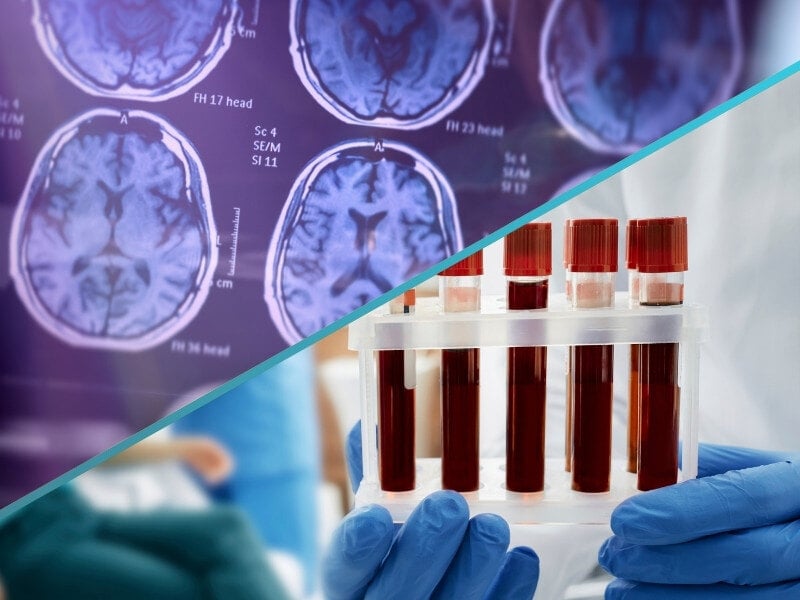αSyn-SAA Biomarker Highly Correlated with Dementia with Lewy Bodies
_1.jpg)
A study has found that having a positive result from α-synuclein seed amplification assay (αSyn-SAA) is highly correlated with clinical features of dementia with Lewy bodies (DLB). The multicentre study published in Neurology looked at results of αSyn-SAA from patients with DLB and healthy controls.
James Leverenz is a neurologist and one of the study’s senior authors, he directs the Cleveland Clinic Lou Ruvo Center for Brain Health in Cleveland.
He commented: “DLB is particularly difficult to diagnose, and it is currently done primarily by clinical evaluation. This study provides important evidence for improving diagnostic criteria as well as supporting the clinical use of a direct biomarker.”
The Lou Ruvo Center for Brain Health coordinates the multi-centre DLB consortium which convenes researchers working on the disease across the world. The consortium has enabled the collection of clinical data for DLB diagnostic biomarker discovery.
Dementia with Lewy bodies
DLB is a form of dementia that is characterised by the build-up of clumps of proteins in the brain called Lewy bodies. It’s associated with symptoms like loss of sleep, hallucinations, impaired or fluctuating cognition, and movement problems. Along with Parkinson’s disease dementia, DLB is one of the two related forms of Lewy body dementia (LBD) which present with these protein clumps.
DLB is a less common form of dementia compared to other types like Alzheimer’s, however its exact prevalence is not known due to its difficulty of diagnosis. Current estimates state the disease causes 5% of dementias diagnosed, however scientists reckon this could actually be as high as 20%, according to the Alzheimer's society.
Suspicions for this large rate of underdiagnosis are largely due to the fact that the only way to definitively confirm DLB is through autopsy. In the clinic, the disease is diagnosed based on the symptoms presented by the patient. Sometimes the core symptoms are either subtle or absent, and many of them overlap with the symptoms of Parkinson’s disease, Alzheimer’s disease, or other dementias. DLB could therefore be mistaken for these other forms of dementia and misdiagnosed.
This is why using αSyn-SAA as a diagnostic biomarker could be a gamechanger for the disease. The assay measures aggregates of misfolded proteins that occur in Lewy bodies, key markers of DLB.
The Study
Cerebrospinal fluid (CSF) was taken from patients and run through the αSyn-SAA assay. The results found that αSyn-SAA returned positive for 72% of the DLB cohort versus just 4% in the control groups. Furthermore, 78% of patients in the disease cohort who exhibited at least two core clinical features of the disease were positive for αSyn-SAA.
Centres also performed standardised clinical assessments which were also analysed. This data was used to compare patients in the DLB cohort who had a positive αSyn-SAA result to patients in the same cohort who instead were negative.
DLB patients who were αSyn-SAA-positive had:
- Lower Montreal Cognitive Assessment score (18.8 ± 5.7 vs. 21.2 ± 5.2; P = .01) than αSyn-SAA-negative DLB patients
- Higher mean score on the Movement Disorders Society Unified Parkinson’s Disease Rating Scale (MDS-UPDRS) part III (33.8 ± 15. 1 vs. 25.6 ± 16.4; P = .001) than αSyn-SAA-negative DLB patients
- Greater likelihood to report REM sleep behavior disorder (86% vs. 62% of patients; P < .0001) than αSyn-SAA-negative DLB patients
- Greater likelihood to have hyposmia, defined as scoring less than the 15th percentile on the University of Pennsylvania Smell Identification Test (UPSIT) (90% vs. 32% of patients; P < .0001) than αSyn-SAA-negative DLB patients
The Cleavland Clinic notes that hyposmia (a loss of smell) was the most statistically significant predictor of αSyn-SAA positivity.
The study authors concluded that it has provided Class III evidence that αSyn-SAA assays of CSF can distinguish between patients clinically diagnosed with DLB and healthy controls.
Leverenz also pointed out the significant minority of DLB patients that did not have a positive αSyn-SAA result. Furthermore, some clinical features are more associated with a positive result than others. These data could suggest a need to reevaluate the core symptoms of the disease.
“We must consider that the current list of core features overdiagnoses DLB,” Leverenz said. “Based on our findings and other published reports, we recommend that clinical assessment place a higher value on hyposmia, which should be evaluated with an objective test such as the UPSIT.”
Featured Image courtesy of: Suraj Rajan, Wikimedia Commons








